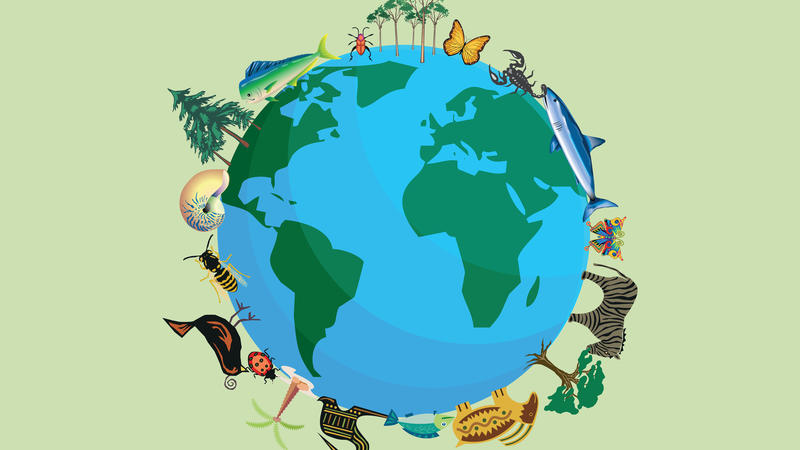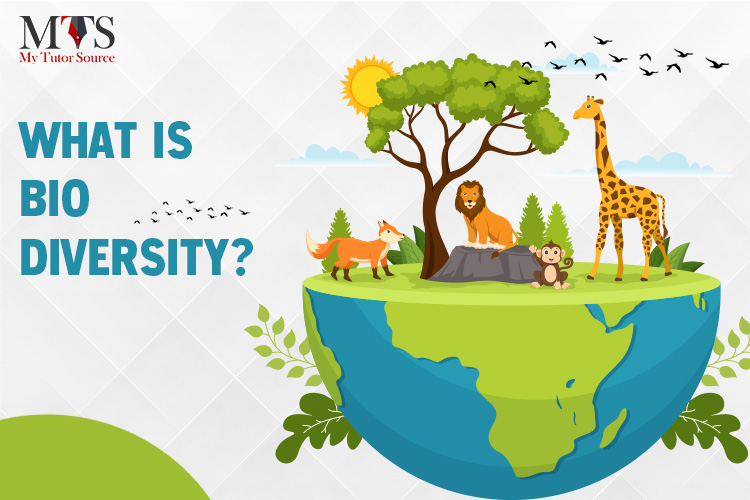Introduction
Biodiversity—the variety of life on Earth, from genetic diversity within species to the richness of ecosystems—forms the foundation of human survival and well-being. It provides food, medicine, clean water, fertile soils, climate regulation, and cultural inspiration. Yet, biodiversity is under greater threat now than at any point in human history. Scientists warn that the planet is undergoing its sixth mass extinction, largely driven not by natural forces but by human activities.
This article explores how human actions, from deforestation and urban expansion to climate change and industrialization, are reshaping ecosystems and jeopardizing biodiversity. By examining the drivers, consequences, and possible solutions, it highlights the urgent need for collective action to safeguard the intricate web of life on which humanity itself depends.
1. Understanding Biodiversity and Its Value
1.1 Definition and Dimensions
Biodiversity is often categorized into three dimensions:
- Genetic diversity: the variation within species, which allows organisms to adapt to environmental changes.
- Species diversity: the variety of different species within a habitat or ecosystem.
- Ecosystem diversity: the diversity of habitats, ecological processes, and biomes across the planet.
Together, these levels form the resilience of nature—the ability of ecosystems to adapt, recover, and sustain life.
1.2 Ecosystem Services
Biodiversity underpins essential ecosystem services, including:
- Provisioning services: food, fuel, fiber, and medicines.
- Regulating services: climate control, flood prevention, and disease regulation.
- Supporting services: soil formation, nutrient cycling, and pollination.
- Cultural services: recreation, spiritual value, and cultural heritage.
The degradation of biodiversity directly translates to the erosion of these life-support systems.
2. Human Activities Driving Biodiversity Loss
2.1 Habitat Destruction and Land-Use Change
One of the primary drivers of biodiversity decline is habitat destruction. Expanding agriculture, logging, urban sprawl, and infrastructure projects fragment ecosystems, leaving species with shrinking and degraded habitats.
- Deforestation in the Amazon has led to massive losses of flora and fauna, disrupting global carbon cycles.
- Wetland drainage has eliminated critical breeding grounds for countless migratory birds.
2.2 Climate Change
Climate change, largely caused by the burning of fossil fuels, has become a critical stressor for biodiversity. Rising temperatures, shifting precipitation patterns, and extreme weather events alter habitats and push species beyond their adaptive limits. Coral reefs, for instance, are bleaching at unprecedented rates due to warming oceans.
2.3 Pollution
Pollution—from plastics in oceans to pesticides on farmlands—poses another existential threat.
- Chemical pollution reduces insect populations and contaminates water systems.
- Plastic waste entangles marine life and enters food chains, with long-term unknown consequences.
2.4 Overexploitation of Resources
Overfishing, hunting, and unsustainable harvesting of plants push species to extinction. The collapse of fish stocks in parts of the world demonstrates how exploitation without limits leads to ecological and economic crises.
2.5 Invasive Species
Human global mobility has accelerated the spread of invasive species. Non-native plants, animals, and pathogens often outcompete native species, disrupting ecosystems. Examples include the introduction of zebra mussels in North America’s Great Lakes and cane toads in Australia.
3. The Consequences of Biodiversity Decline
3.1 Ecological Imbalance
When species disappear, ecosystems lose stability. Predators vanish, prey overpopulate, and plant growth may spiral out of control, creating cascading ecological crises.
3.2 Food Security Threats
Agricultural systems depend on pollinators, healthy soils, and balanced ecosystems. The decline of bees and other pollinators already threatens global food production.

3.3 Health Implications
Biodiversity loss also contributes to the spread of zoonotic diseases. As humans encroach on wild habitats, they increase contact with disease-carrying species, raising the risk of pandemics like COVID-19.
3.4 Economic Costs
The World Bank estimates that biodiversity loss could cost the global economy trillions of dollars annually. Fisheries, forestry, tourism, and agriculture all face major risks.
3.5 Ethical and Cultural Dimensions
Beyond material benefits, biodiversity embodies cultural, spiritual, and aesthetic values. The extinction of species represents an irreversible loss to humanity’s shared heritage.
4. Case Studies: Human Footprints on Biodiversity
4.1 The Amazon Rainforest
The Amazon, often called the “lungs of the Earth,” harbors immense biodiversity. Yet deforestation for cattle ranching and soy production continues to decimate habitats, undermining indigenous communities and global climate stability.
4.2 Coral Reefs
Coral reefs support 25% of marine species but face existential threats from warming oceans, acidification, and pollution. Without urgent action, many reefs could vanish within decades.
4.3 African Savannas
Poaching and land conversion have drastically reduced populations of elephants, lions, and other iconic species, altering the balance of savanna ecosystems.
5. Strategies for Protecting Biodiversity
5.1 Conservation and Protected Areas
Expanding and effectively managing protected areas, including national parks and marine reserves, remains a cornerstone of biodiversity preservation.
5.2 Sustainable Land and Resource Management
Agroecology, sustainable forestry, and fisheries management can balance human needs with ecosystem protection.
5.3 Climate Action
Mitigating climate change by transitioning to renewable energy and reducing emissions is critical for biodiversity resilience.
5.4 Pollution Reduction
Global agreements to reduce plastic waste, regulate pesticides, and clean up waterways are necessary to reduce pollution’s impact on biodiversity.
5.5 Community and Indigenous Engagement
Local and indigenous communities often hold deep ecological knowledge and play vital roles in conservation efforts. Recognizing their rights and involving them in decision-making enhances conservation outcomes.
5.6 Global Governance
International agreements, such as the Convention on Biological Diversity (CBD) and the Paris Agreement, provide frameworks for cooperation but require stronger implementation and accountability.
6. The Role of Technology and Innovation
- Remote sensing and satellite monitoring help track deforestation and habitat change.
- Artificial intelligence supports biodiversity modeling and conservation planning.
- Genetic tools like DNA barcoding enable better species identification and monitoring.
- Biotechnology may offer solutions for restoring ecosystems, though it raises ethical concerns.
7. The Path Forward: Rethinking Humanity’s Relationship with Nature
Biodiversity protection is not just an environmental issue; it is an existential challenge for humanity. It requires rethinking economic systems, consumption patterns, and values. Moving from a model of exploitation to one of stewardship means embracing sustainable development that integrates ecological health with social equity.
Conclusion
The fate of biodiversity is inseparable from the fate of humanity. As human activity continues to reshape ecosystems, the planet stands at a crossroads. The trajectory of biodiversity decline can still be reversed—but only through decisive, coordinated, and inclusive action. Protecting biodiversity is not merely about saving other species; it is about preserving the very systems that sustain human life and prosperity.
















































